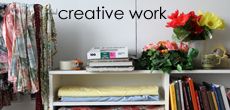 Welcome, fall. Ohio has a beautiful autumn season, the only downfall being that it gets cold much too early for me (For example, today's high is 54 degrees, and it's still September! This is unheard of in the South, where I heard rumors of highs in the 90s this week.). My fall garden is not so impressive, but rather is primarily only an extension of the spring/summer garden. However, being that last year at this time I had just moved here and had no fall garden at all, I'm going to call this one a success.
Welcome, fall. Ohio has a beautiful autumn season, the only downfall being that it gets cold much too early for me (For example, today's high is 54 degrees, and it's still September! This is unheard of in the South, where I heard rumors of highs in the 90s this week.). My fall garden is not so impressive, but rather is primarily only an extension of the spring/summer garden. However, being that last year at this time I had just moved here and had no fall garden at all, I'm going to call this one a success.First of all, the swiss chard has not stopped growing since May! It doubles and triples overnight, it seems. I haven't been cooking with it as much as I'd like to. I'm still acquiring the taste for it. As a general rule, I like almost all vegetables (except beets--I'm still steadily trying to work up to the day when I can say I tasted a beet and liked it!), but chard is still growing on me.
 As you can see, there is a lot that needs to be harvested (of course I would like it better if I wouldn't let it grow so large and use the baby leaves instead). Next to that you'll see the cabbage, which I never picked. I kind of left it there for the caterpillars. Sigh. It's just that after fighting with them over whose property these heads of cabbage were day after day for so long, I finally surrendered it to the squishy green beasts. It's riddled with holes and doesn't look appetizing, so I think I'll just let it be this year.
As you can see, there is a lot that needs to be harvested (of course I would like it better if I wouldn't let it grow so large and use the baby leaves instead). Next to that you'll see the cabbage, which I never picked. I kind of left it there for the caterpillars. Sigh. It's just that after fighting with them over whose property these heads of cabbage were day after day for so long, I finally surrendered it to the squishy green beasts. It's riddled with holes and doesn't look appetizing, so I think I'll just let it be this year. The tomatoes are still flowering! When I first heard of fall tomatoes (last year), I was taken back because in Arkansas, the tomato plants more or less shrivel up and die by the middle of August! Although the harvests haven't been as large as they were in September, between the 10 tomato plants, there are around 40-50 large green tomatoes present at any given time, and lots of tiny cherry and pear tomatoes. I've been picking the green ones as soon as they show a hint of pink and ripening them in brown paper sacks so that the squirrels can't get them. The vicious, conniving squirrels.
The tomatoes are still flowering! When I first heard of fall tomatoes (last year), I was taken back because in Arkansas, the tomato plants more or less shrivel up and die by the middle of August! Although the harvests haven't been as large as they were in September, between the 10 tomato plants, there are around 40-50 large green tomatoes present at any given time, and lots of tiny cherry and pear tomatoes. I've been picking the green ones as soon as they show a hint of pink and ripening them in brown paper sacks so that the squirrels can't get them. The vicious, conniving squirrels. The fall lettuce has been pounced on and dug up a few times by those squirrels, but a few seedlings have managed to make it this far. I'm hoping for a nice lettuce crop soon, but we'll see. I'll probably cover this bed with plastic when it gets colder. We still have a few weeks until the first frost.
The fall lettuce has been pounced on and dug up a few times by those squirrels, but a few seedlings have managed to make it this far. I'm hoping for a nice lettuce crop soon, but we'll see. I'll probably cover this bed with plastic when it gets colder. We still have a few weeks until the first frost. The fall cilantro crop is doing well. I love having fresh cilantro in my backyard...it's probably my favorite herb!
The fall cilantro crop is doing well. I love having fresh cilantro in my backyard...it's probably my favorite herb! The fall peas are making their way up the trellis slowly but surely. My zone was just out of the range for growing fall peas, so I'll try covering them when it gets colder...I already had seeds and I just love peas so much that I had to try.
The fall peas are making their way up the trellis slowly but surely. My zone was just out of the range for growing fall peas, so I'll try covering them when it gets colder...I already had seeds and I just love peas so much that I had to try. The zinnias are still going strong, although next year I think I'll plant ten times as many! I'm also planning to put some tulip bulbs in the ground this weekend for a fun surprise next spring.
The zinnias are still going strong, although next year I think I'll plant ten times as many! I'm also planning to put some tulip bulbs in the ground this weekend for a fun surprise next spring.I forgot to take pictures of the eggplants, but they are doing really well. I just harvested a big black beauty one a few days ago and five more are on the plant! It's actually leaning over from all the weight. The gretel eggplant has several small white ones as long as the squirrels stay away.
p.s. Don't forget that today is the last day to enter my custom garden keepsake illustration giveaway via Desirous of Everything!














































